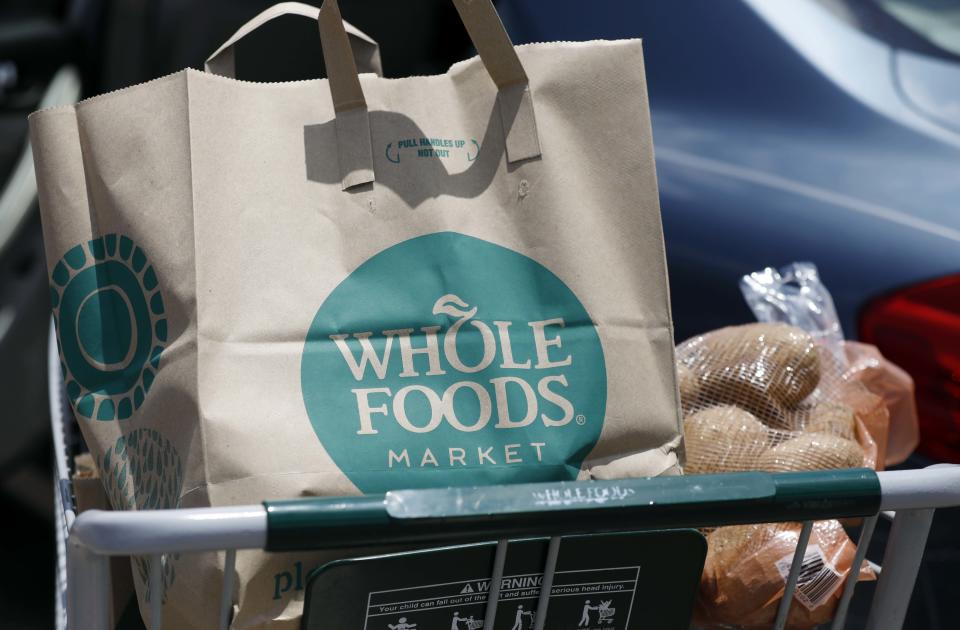Why Amazon still doesn't have 1000 Whole Foods stores
It was an ambitious store growth number often touted by Whole Foods’ then co-CEOs Walter Robb and John Mackey: 1,000 organic Whole Foods stores in America.
Many on Wall Street had little reason to doubt Mackey — the organic food pioneer that founded Whole Foods in 1980 — and Robb — the operations guy that is no slouch on the emerging food knowledge front — could pull off such a feat. Over the course of 25 years of working together, the two had grown Whole Foods from a niche supermarket to a mainstay among those wanting to live healthier lifestyles.
The 1,000-store mark was frequently discussed at investor presentations as one reason among many to buy the stock (former Whole Foods ticker symbol for you feeling a dose of nostalgia: “WFM”). In fact, by the time Whole Foods opened its first value-focused 365 by Whole Foods location in 2016 in Silver Lake, Ca. the Street was thinking the 1,000-store goal could easily be eclipsed.
But then came two years (2016 and 2017) of declining same-store sales for the namesake Whole Foods banner. New competitors in the organic food category such as Target (TGT) and Kroger (KR) began to chip away at Whole Foods’ dominance, under-cutting the pioneering chain on prices.
Amid the sales struggles, by November 2016 Robb was asked to step down as co-CEO. He remained as a member of Whole Foods board. Talk of reaching 1,000 Whole Foods stores died down as the founder turn sole CEO Mackey sought to stabilize the struggling business.
By June 16, 2016, Mackey found himself signing off on the headline-grabbing $13.7 billion acquisition by digital beast Amazon (AMZN). And grocery store stocks like Kroger got slaughtered on the news.
Since then, Amazon has tossed all sorts of gum at the wall to make Whole Foods more competitive with a fresh crop of rivals. The company has given discounts to Prime members who shop at Whole Foods stores. It has launched discounts on countless perishable items in an effort to shed the chain’s “Whole Paycheck” image. Amazon has even continued to expand the number of Whole Foods stores that offer same-day delivery.

Amazon rarely mentions Whole Foods in earnings
Robb said on Yahoo Finance’s The First Trade that the Amazon deal for Whole Foods was a game-changer.
“The deal heralded as a proxy that integrated retailing is the future,” Robb said. “The customer is now in charge of what choices they make — they aren’t going to be told what foods to have or where they are going to shop. So that deal said unless you are willing to play in multiple channels, you are going to have a hard time growing.”
The only thing missing here coming up on the two-year anniversary of Amazon’s Whole Foods deal? Those 1,000 Whole Foods stores or any signs by Amazon management they see a path (or want to see a path) to reaching the mark.
Amazon rarely mentions Whole Foods on its earnings conference calls. The company has shuttered the 365 by Whole Foods concept. Whole Foods had about 470 stores at time of being acquired by Amazon, it now only has 500 locations (and most of those leases were likely signed before Amazon’s takeover).
When asked why Amazon has been slow to open more Whole Foods, Robb said it may just be a reality of the current digital shopping movement.
“It’s funny how that 1,000-store number came up. The company was doing, 20 to 25 new stores a year, but remember the world has changed because of Prime Now and these other delivery options the customer have,” Robb explained. “You take a physical store and extend their sphere of influence great. You see Walmart talking about this and Target talking about this. So the way you do retail now is different than just having physical stores.”
“The 1,000 stores are achievable,” Robb added.
Perhaps some day.
Brian Sozzi is an editor-at-large and co-host of ‘The First Trade’ at Yahoo Finance. Follow Brian Sozzi him on Twitter @BrianSozzi.
Read the latest financial and business news from Yahoo Finance
Follow Yahoo Finance on Twitter, Facebook, Instagram, Flipboard, SmartNews, LinkedIn, YouTube, and reddit.

